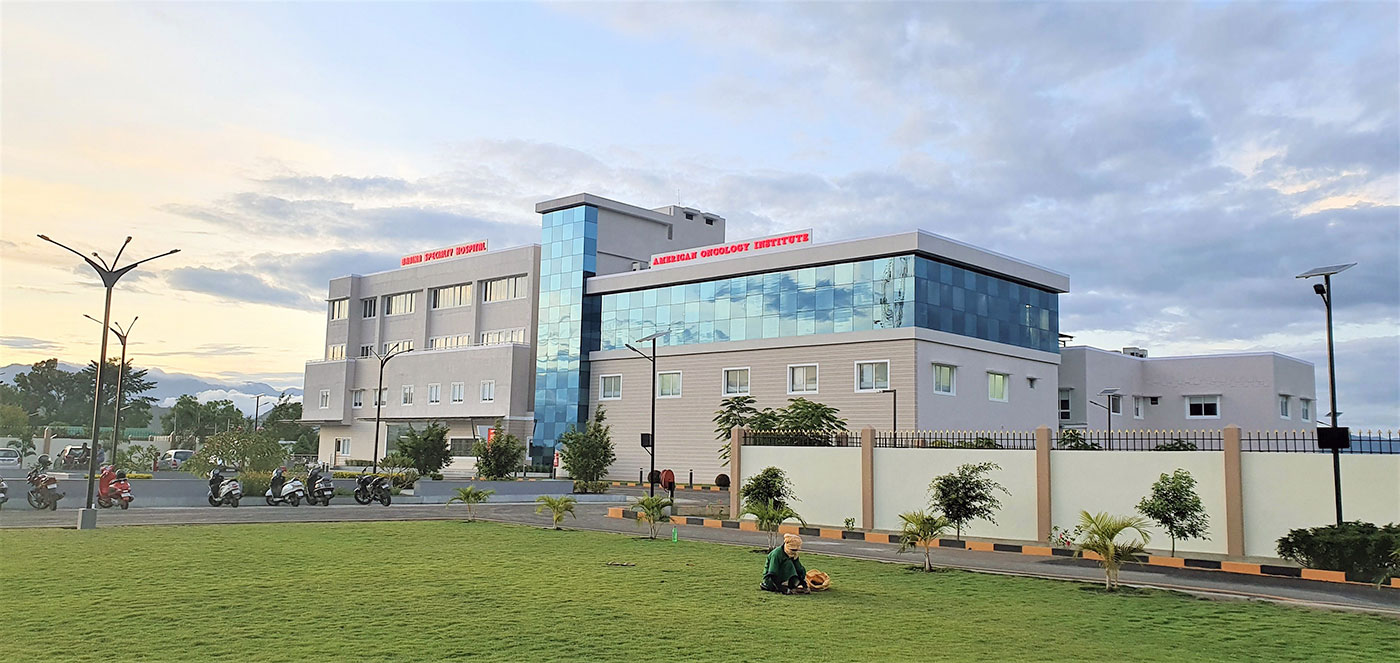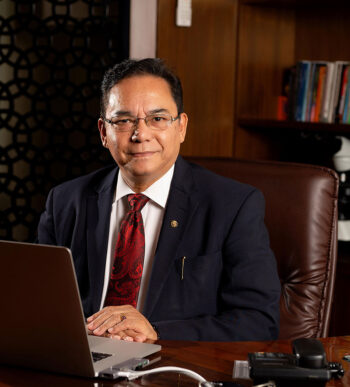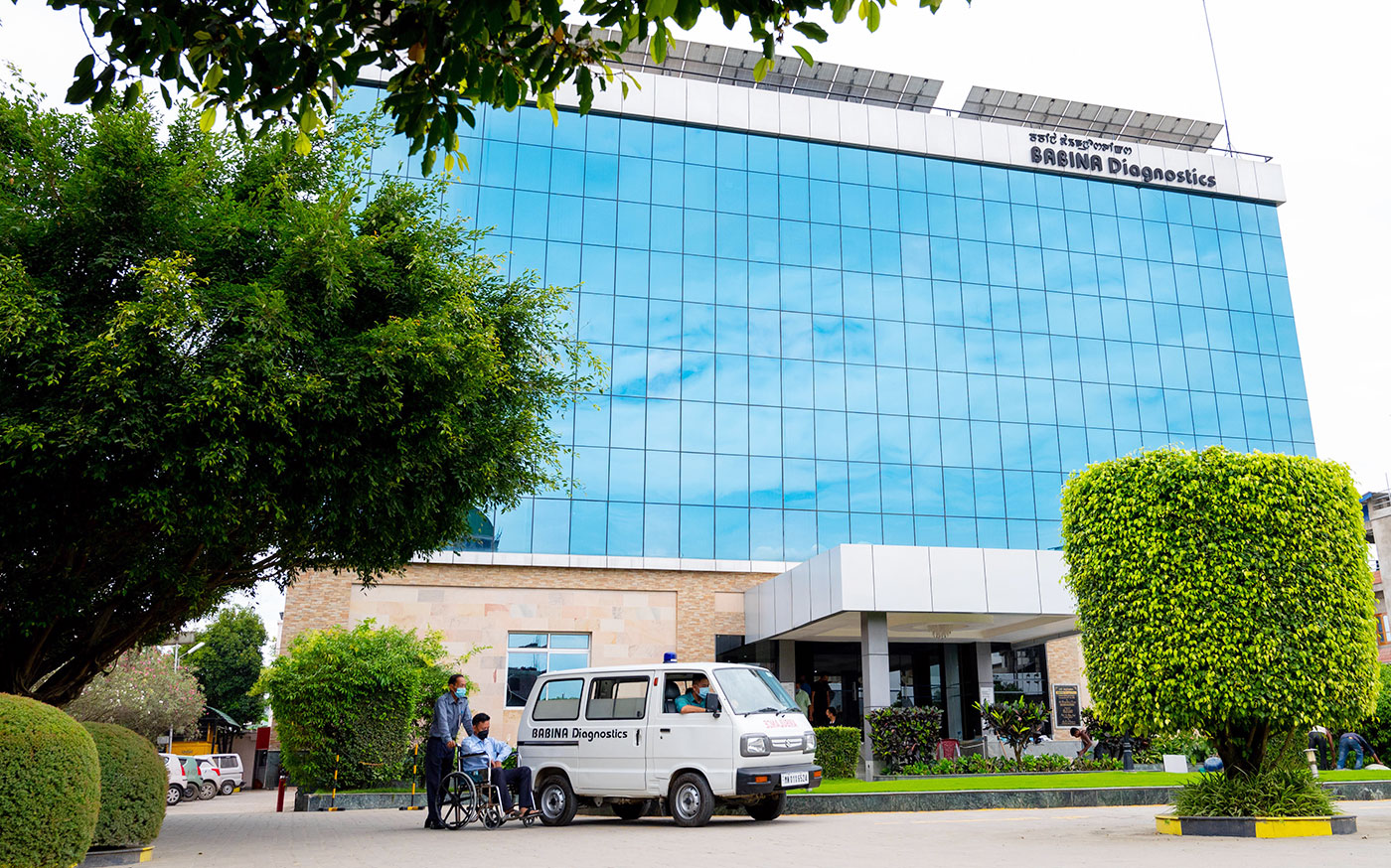
In many ways, Dr Th Dhabali Singh’s story reflects Manipur’s bumpy ride to progress and the steadfast commitment of her people to see their beloved state shine. It is a fascinating story that quite simply must be told.
Dr Singh, 67, is Chairman & Managing Director of the Babina Group of Companies, which has under its wing, diagnostic labs that offer state-of-the-art facilities, and more recently, Manipur’s first-ever super-speciality cancer hospital, the American Oncology Institute (AOI).

But the Babina Group didn’t just happen overnight. It started more than three decades ago with a floppy drive, a small saving that a very young government doctor could muster and a giant leap of faith.
Dr Singh was only 31 when he quit a much-coveted government position as an associate professor in pathology at Regional Institute of Medical Sciences (RIIMS), Manipur’s leading hospital, to invest his meagre funds in a diagnostic lab. What makes someone in a stable and admired position veer towards something so risky? Business acumen, of course; but also a strong sense of purpose and the belief that the people of his state deserve more.
The people of Manipur had for far too long been dependent on high-quality medical services that were available across their borders in Guwahati or as far away as New Delhi. A simple skin allergy would see a patient travel out of the state for treatment. Some of this stemmed from a lack of confidence in the excellent doctors available in the state and the belief that things were somehow better on the other side. Something needed to be done about this and the good doctor took it upon himself to do what his noble profession sought of him. If he was to alleviate the suffering of the sick, he would need to create the infrastructure for their treatment. It would have to be infrastructure that instilled confidence in the people of Manipur that high-quality medical services were available at their doorstep. And thus, the idea of a state-of-the-art diagnostic lab was born.
Dr Singh recalls how Professor C Das, the Director of RIIMS, tried to persuade him against taking such a risky step. The Professor even suggested he continue working with RIIMS, part-time, while also running his new lab. This, Dr Singh thought, would be too constraining; he was sure he would have to give it his all to ensure his dream would not just come to fruition, but that a benchmark would also be set for other laboratories in the state.
With the little savings that he had and armed with a personal computer that ran on a floppy drive, the 31-year-old Dr Singh, set up a small pathology lab. This was 1985 when computers had just started making their way into workplaces in India. Dr Singh was keen to introduce computer-generated pathology reports and so he roped in a teacher in computer programming at Manipur University to help write a programme for the lab reports. They worked day and night to develop the programme and when it was finally ready to be made into an executable file, the floppy crashed, forcing them to go back to the drawing board. From then on, every earning from the lab was reinvested in new diagnostic technology or computers. Innovation, Dr Singh knew intuitively, was key to the lab’s success; it would also generate confidence among patients that state-of-the-art treatment was possible in their own state.
More than three decades later, there is no better person than Dr Singh who understands the challenges that medical services face in Manipur. But, as North East Stories found in this truly inspirational interview with the doyen of health care, with the right conditions, including a government committed to improving medical infrastructure in the state, Manipur will be well-placed to see a rapid improvement in its medical facilities. For now, Dr Singh has set the ball rolling.

How many times did you think of just giving up and saying it was not worth it? Maybe, for instance, it might have been easier for you to be employed in a hospital and take home your salary and sleep.
I never thought of giving it up. I was in government service for 11 years. I was in RIIMS and I took voluntary retirement or rather resigned from that job. I was working as an associate professor in pathology at RIIMS. If I had continued in that post I don’t think I’d be able to grow to this today because one cannot do part-time practice on a big scale. I would have also felt guilty all the time as, on one hand, I’d have government service and the other private. So, ultimately I decided that I should leave government service and start full-time practice so that I can do as I like. I was even advised against leaving the job by the then-head of the institute Dr C. Das who was the director of RIIMS. He called me and told me to withdraw my resignation. He said, ‘Why should you resign? You continue your practice as many people are doing. Why should you leave?’ I said, ‘Sir, if I withdraw my resignation, people will ask me how you have withdrawn your resignation and I’ll say that Professor C. Das has advised me not to and even told me to continue doing my practice. Then, what will people say about you? That you’re encouraging the practice’. He then said, ‘I think your point is justified, you’re right’. So, I left the service and started full-time way back in 1994. After that, I could do as I wished. Another thing was that whatever earnings we made from that small laboratory we would reinvest it and would always try to bring in new technologies in diagnostics and even computerization. I started using computers as early as 1985.
Your early days also intertwined with that of Manipur's own steps of infancy in the medical space -- do elaborate.
I was around 31 years of age. The computer that we started using in 1985 was quite interesting, as I remember it. It was just a PC (Personal Computer) that didn’t have a hard disk and was very bulky. Floppy drives, which were very slow, were used, and floppy drives A and B. We wanted to introduce reporting through the computer – printing from the computer. So, I consulted with one of the Manipuri University teachers on the computer. He was my partner and I gave him the design for writing the programme. We would sit down together the whole day to write the programme and at the end of the day when we were about to make it an executable file, the floppy crashed. So, you had to start again from zero. It was a challenging time but now, you know technology has improved.
How long would Manipur take to be a health hub for, say, medical tourism? What is the future of medical tourism in Manipur?
With the current trend that is happening here, I think it’s going to take time. People have been saying that medical tourism is possible in Manipur but my personal experience is that we tried our level best. In the far extreme corner of the country; in the periphery of the country it’s very unlikely that a patient who is in Guwahati, or in Shillong will bypass everything and come to Imphal. It’s a natural tendency and a lot of Manipur’s patients are going out. There is a rather exodus of patients to other cities for their medical care.
Why do you think patients prefer to seek medical treatment outside? Is it because of the facilities simply being not there or is it because of the mindset that we are not capable of treating it?
It is the mindset. We have nearly 75 per cent of the technologies and expertise; everything here in this state. But still, there is the mindset that it is not the place one should go for treatment. That is the attitude here; although it may not be 100 per cent, at least 25 per cent of the people who can afford to spend on healthcare go outside.
We take our backyard for granted. As you know we are known to be achievers, are brilliant and have excellent doctors. Why should we wait in long queues at Apollo or other hospitals outside instead of having the treatment in the comfort of our homes?
Let me narrate from my personal experience. There is a difference between the people from the hill and the valley. I see that the hill people have confidence in doctors but it is mainly the valley people, who are going outside for treatment. If treatment is given or healthcare facilities are provided the acknowledgement and gratitude we receive are from the hill people, but valley people’s mindset is different. That is one observation.
Yes, it's a natural tendency for people in Imphal to go to Delhi for treatment. You know the saying, “The neighbour’s grass is greener”. The Manipuri local patients, even for small minor problems, go to Guwahati as well. This is very depressing and I’ll narrate the story of one of my consultants in a cancer hospital. A paediatric haematologist, a child specialist for cancer, was taking care of a small boy. The boy showed tremendous improvement from his day of admission. Then, the boy’s father approached the doctor and said although his son is improving he would still like to take him to Guwahati and check with other doctors. Could he, therefore, suggest some names? Just imagine what would be the impact of that consultant doctor. He was clearly annoyed, telling him it was his choice but once he had taken his son to Guwahati, he (the doctor) would not be available for consultation. So, these things happen from time to time.
What then is the future of healthcare for a state like Manipur? Have we evolved? Have we grown?
It is definitely going to evolve; grow because many health centres are coming up and we’re going to have more institutions. We already have two medical colleges, Shija has started two years ago and the brand new Medical College of Churachandpur has opened. So, four medical colleges in a small state like Manipur is the size of a district in some other states. So, the future is clearly brighter but I’m not very optimistic about medical tourism to Manipur soon.
With four medical institutes in the state, what would you think the authorities should keep in mind?
Indeed, healthcare should function with an acceptable level of service. In healthcare, we should never compromise on anything, be it in technology, personnel or other things and it should always be world-class. As it concerns somebody’s life, we should put in the best of the best in terms of personnel, expenses, infrastructures and technology. We should not compromise in such areas.
Is RIIMS (the premier medical college of the state) still churning out bright medical students or should there be some change in the system?
RIIMS have been producing a good number of students. I, too, am a product of RIIMS. RIIMS products in the Northeast are doing quite well and are accepted in almost every part of the region. Also, many of them are now leaders in their own fields. So, RIIMS is a very good institute. However, people have high expectations and we have not been able to meet them. Every time the head of the institution announces that it will come up to the level of AIIMS, we haven’t seen it, even today. Maybe the funding is not enough because health institutions are organizations where a lot of funding is necessary as medical equipment is quite expensive. So, investment is required but I think there are some restrictions on the investment that may be one of the reasons. Right now, I can see that RIIMS is growing. I can recollect the early days of RIIMS; there were many crises, many disturbances and a lot of strikes on campus. It is running much more smoothly now and is progressing well.
What are the three aspirations you have as a healthcare pioneer in terms of the government’s policies and atmosphere for the state to prosper and excel in the healthcare sector?
The government should invest, infuse and improve the standard of healthcare in the government sector because almost 75 percent of patients go to government hospitals as they prefer subsidized, cheap or free healthcare which does not compromise on the quality, and that ultimately is in the government sector. I would personally like the government sector to come up strongly so that we in the private sector won’t be unnecessarily criticized by the people because it is problematic when patients below the poverty line come to us and are unable to pay the required fees. That’s why if government hospitals and healthcare units in every nook and corner improves the crisis would surely be gone. Also, I would like to point out that the government should not think that private practitioners or private hospitals or private healthcare centres are their competitors; we are not. We should join hands and work together and collaborate and they should also support the private sector in whatever manner they are supposed to do. Then, the outcome of the healthcare facilities in the state will be good. For some time, people thought that the private and government sectors were competing against each other.
Ideally, they should not compete but coexist. Also, it’s the choice of the people, the choice we have as citizens whether to go to a government hospital if we don’t want to go to a private one.

